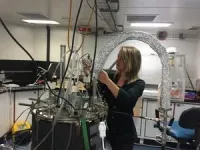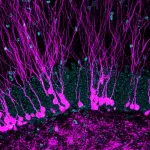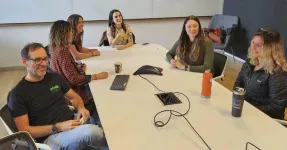(Press-News.org) The Department of Defense awarded a little more than $1.9 million to a multidisciplinary team of researchers at the University of Arkansas and University of Arkansas for Medical Sciences to develop a wearable device that will assist with the early detection and monitoring of internal and external bleeding. The grant comes as part of the Department of Defense’s prestigious Congressionally Directed Medical Research Programs.
Hemorrhagic shock is currently the leading cause of preventable death in casualty care settings. Existing methods often fail to detect blood loss until the onset of shock, which can be too late for some patients. This makes early detection and management of bleeding-related conditions critical to improving survival rates.
The team is designing a mobile device that can detect blood pressure waveforms, which correlate with the volume of blood within the blood vessels, the “intravascular volume,” and can be used to determine if blood volume is falling due to hemorrhaging. This will enable first responders and hospital staff to get more accurate readings earlier and respond with better timed and more precisely calibrated care.
The principal investigator on the four-year award is associate professor of biomedical engineering at the U of A, Morten Jensen, who also has a background in electrical and computer engineering and has worked in industry with sensor and signal analysis technologies. Jensen will be joined by Jingxian Wu, a U of A professor of electrical engineering, and Robert Saunders, an associate department head of electrical engineering and computer science. Hanna Jensen, an assistant professor in the Department of Surgery at UAMS and course director of the school’s cardiovascular module, will oversee the translational and clinical phases of the project.
The proposed work will have three goals. First, the team will develop machine learning models and algorithms to analyze the pressure signals for blood loss detection. This involves optimizing learning algorithms with a small amount of data, developing real-time software and creating models based on physiological data. This will improve patient care by enabling accurate and efficient detection of blood loss.
Second, they will prototype and develop a cost-effective wearable device for detecting blood loss. Finally, the team will test the device through clinical trials in a wearable configuration. The goal is to create a device that functions optimally, meets design parameters and performs accurately and reliably in real-world scenarios.
Morten Jensen, who is a native of Denmark, said, “Our similar educational backgrounds make it very exciting to collaborate with Jingxian Wu and Robert Saunders. I also served in the Danish military and know first-hand the importance of reliable equipment that works fast and is lightweight.”
Saunders, who is a first responder in Madison County with the volunteer fire department, will be tasked with constructing, and then shrinking down, the prototype. He noted that the device would be extremely useful when medics showed up to an incident with multiple casualties and a limited amount of saline (in Madison County, casualties may be as many as 20 minutes from the nearest hospital). The device would help first responders determine exactly who needs the fluid and how badly, optimizing the use of limited resources. The device would also remain attached to anyone involved in the incident in the event their blood pressure suddenly crashed due to a delayed reaction — at which point, fluids could be immediately administered.
Ultimately, the team’s goal is to develop a device that is less than an inch square and sells for less than $100. It would have a catheter that connects to a vein as well as a port to which an IV bag could be connected.
END
$1.9 million awarded to create device that will reduce death from bleeding
The Department of Defense Award will be used to develop a wearable device to assist with the early detection and monitoring of internal and external bleeding.
2024-04-05
ELSE PRESS RELEASES FROM THIS DATE:
Renowned St. Jude clinician and researcher to receive coveted award at AACR annual meeting
2024-04-05
Scientists at St. Jude Children’s Research Hospital are preparing to demonstrate their expertise and foster collaborations at the American Association for Cancer Research (AACR) annual meeting. It will be held April 5-10, 2024 in San Diego, California.
Each year, members of the cancer research community including scientists, clinicians, healthcare professionals, cancer survivors, patients and advocates attend AACR’s annual meeting. It provides an opportunity for St. Jude researchers to share their research findings ...
Fuelling nerve cell function and plasticity
2024-04-05
Nerve cells (neurons) are amongst the most complex cell types in our body. They achieve this complexity during development by extending ramified branches called dendrites and axons and establishing thousands of synapses to form intricate networks. The production of most neurons is confined to embryonic development, yet few brain regions are exceptionally endowed with neurogenesis throughout adulthood. It is unclear how neurons born in these regions successfully mature and remain competitive to exert their functions within a fully formed organ. However, understanding these processes holds great potential for brain repair approaches during disease.
A team ...
First cardiac bioimplants for the treatment of patients with myocardial infarction using umbilical cord stem cells
2024-04-05
The results of a pioneering study support the safety of the bioimplants called PeriCord, made from stem cells of the umbilical cord and pericardium from a tissue donor, which aid in the regeneration and revascularisation of the affected area.
The study has monitored 7 interventions of this pioneering tissue engineering surgery over three years, noting excellent biocompatibility and no rejection in patients.
The therapy has been developed by the research group ICREC (Heart Failure and Cardiac Regeneration) at Germans Trias i Pujol Research ...
Drug shortages prior to and during the COVID-19 pandemic
2024-04-05
About The Study: Supply chain issues associated with drug shortages increased at the beginning of the COVID-19 pandemic according to the results of this national cross-sectional study. Ongoing policy work is needed to protect U.S. drug supplies from future shocks and to prioritize clinically valuable drugs at greatest shortage risk.
Authors: Katie J. Suda, Pharm.D., M.S., of the University of Pittsburgh School of Medicine, is the corresponding author.
To access the embargoed study: Visit our For ...
Radiation before mastectomy cuts time delays for reconstructive surgery in breast cancer patients
2024-04-05
Researchers at The University of Texas MD Anderson Cancer Center showed that altering the sequence of breast cancer treatment to administer radiation before mastectomy allowed for concurrent breast reconstruction surgery, which reduced the number of operations required, minimized treatment delays and improved patient satisfaction.
The Phase II trial results, published today in JAMA Network Open, evaluated 49 patients who received radiation therapy followed by mastectomy with immediate breast reconstruction. There were no complete flap ...
A deep dive into the genetics of alcohol consumption
2024-04-05
A research group centered at the University of California San Diego School of Medicine has drilled deep into a dataset of over 3 million individuals compiled by the direct-to-consumer genetics company 23andMe, Inc., and found intriguing connections between genetic factors influencing alcohol consumption and their relationship with other disorders.
The study was recently published in the Lancet eBioMedicine.
Sandra Sanchez-Roige, Ph.D., corresponding author and associate professor at UC San Diego School of Medicine Department of Psychiatry, explained that the study used genetic data to broadly classify individuals as being European, Latin American ...
CHEOPS detects a ‘‘rainbow’’ on an exoplanet
2024-04-05
The CHEOPS space telescope, whose scientific operations centre is based at the University of Geneva (UNIGE), is providing new information on the mysterious exoplanet WASP-76b. This ultra-hot giant is characterised by an asymmetry between the amount of light observed on its eastern terminator - the fictitious line that separates its night side from its day side - and that observed on its western terminator. This peculiarity is thought to be due to a ‘‘glory’’, a luminous phenomenon similar to a rainbow, which occurs if the light from the star - the ‘‘sun’’ around which the ...
UTSA joins consortium to create sustainable aviation hub in San Antonio
2024-04-05
(SAN ANTONIO, TEXAS) — UTSA has signed a memorandum of understanding (MOU) with the U.S. Department of Energy Advanced Research Projects Agency – Energy (ARPA-E), the City of San Antonio, and CPS Energy to develop and promote energy technologies that could potentially decarbonize the aviation sector. The ambitious project will pursue a range of research and development objectives, including sustainable aviation technologies, battery technologies and battery storage solutions, enhanced electric vehicle charging technologies and power-related technologies. The MOU will position San Antonio as an innovation center for these new energy solutions, accelerating their development ...
Kerr-enhanced optical spring for next-generation gravitational wave detectors
2024-04-05
The detection of gravitational waves stands as one of the most significant achievements in modern physics. In 2017, gravitational waves from the merger of a binary neutron star were detected for the first time which uncovered crucial information about our universe, from the origin of short gamma-ray bursts to the formation of heavy elements. However, detecting gravitational waves emerging from post-merger remnants has remained elusive due to their frequency range lying outside the range of modern gravitational wave detectors (GWDs). ...
Magnetic resonance imaging in prostate cancer screening
2024-04-05
About The Study: The results of this systematic review and meta-analysis suggest that integrating magnetic resonance imaging (MRI) in prostate cancer screening pathways is associated with a reduced number of unnecessary biopsies and overdiagnosis of insignificant prostate cancer while maintaining clinically significant prostate cancer detection as compared with prostate-specific antigen (PSA)-only screening.
Authors: Shahrokh F. Shariat, M.D., D.Dr.(hc), of Medical University Vienna in Vienna, is the corresponding author.
To access the embargoed study: Visit our For The Media website at this link https://media.jamanetwork.com/
(doi:10.1001/jamaoncol.2024.0734)
Editor’s ...
LAST 30 PRESS RELEASES:
Heart-brain connection: international study reveals the role of the vagus nerve in keeping the heart young
Researchers identify Rb1 as a predictive biomarker for a new therapeutic strategy in some breast cancers
Survey reveals ethical gaps slowing AI adoption in pediatric surgery
Stimulant ADHD medications work differently than thought
AI overestimates how smart people are, according to HSE economists
HSE researchers create genome-wide map of quadruplexes
Scientists boost cell "powerhouses" to burn more calories
Automatic label checking: The missing step in making reliable medical AI
Low daily alcohol intake linked to 50% heightened mouth cancer risk in India
American Meteorological Society announces Rick Spinrad as 2026 President-Elect
Biomass-based carbon capture spotlighted in newly released global climate webinar recording
Illuminating invisible nano pollutants: advanced bioimaging tracks the full journey of emerging nanoscale contaminants in living systems
How does age affect recovery from spinal cord injury?
Novel AI tool offers prognosis for patients with head and neck cancer
Fathers’ microplastic exposure tied to their children’s metabolic problems
Research validates laboratory model for studying high-grade serous ovarian cancer
SIR 2026 delivers transformative breakthroughs in minimally invasive medicine to improve patient care
Stem Cell Reports most downloaded papers of 2025 highlight the breadth and impact of stem cell research
Oxford-led study estimates NHS spends around 3% of its primary and secondary care budget on the health impacts of heat and cold in England
A researcher’s long quest leads to a smart composite breakthrough
Urban wild bees act as “microbial sensors” of city health.
New study finds where you live affects recovery after a hip fracture
Forecasting the impact of fully automated vehicle adoption on US road traffic injuries
Alcohol-related hospitalizations from 2016 to 2022
Semaglutide and hospitalizations in patients with obesity and established cardiovascular disease
Researchers ‘listen in’ to embryo-mother interactions during implantation using a culture system replicating the womb lining
How changing your diet could help save the world
How to make AI truly scalable and reliable for real-time traffic assignment?
Beyond fragmented markets: A new framework for efficient and stable ride-pooling
Can shape priors make road perception more reliable for autonomous driving?
[Press-News.org] $1.9 million awarded to create device that will reduce death from bleedingThe Department of Defense Award will be used to develop a wearable device to assist with the early detection and monitoring of internal and external bleeding.









